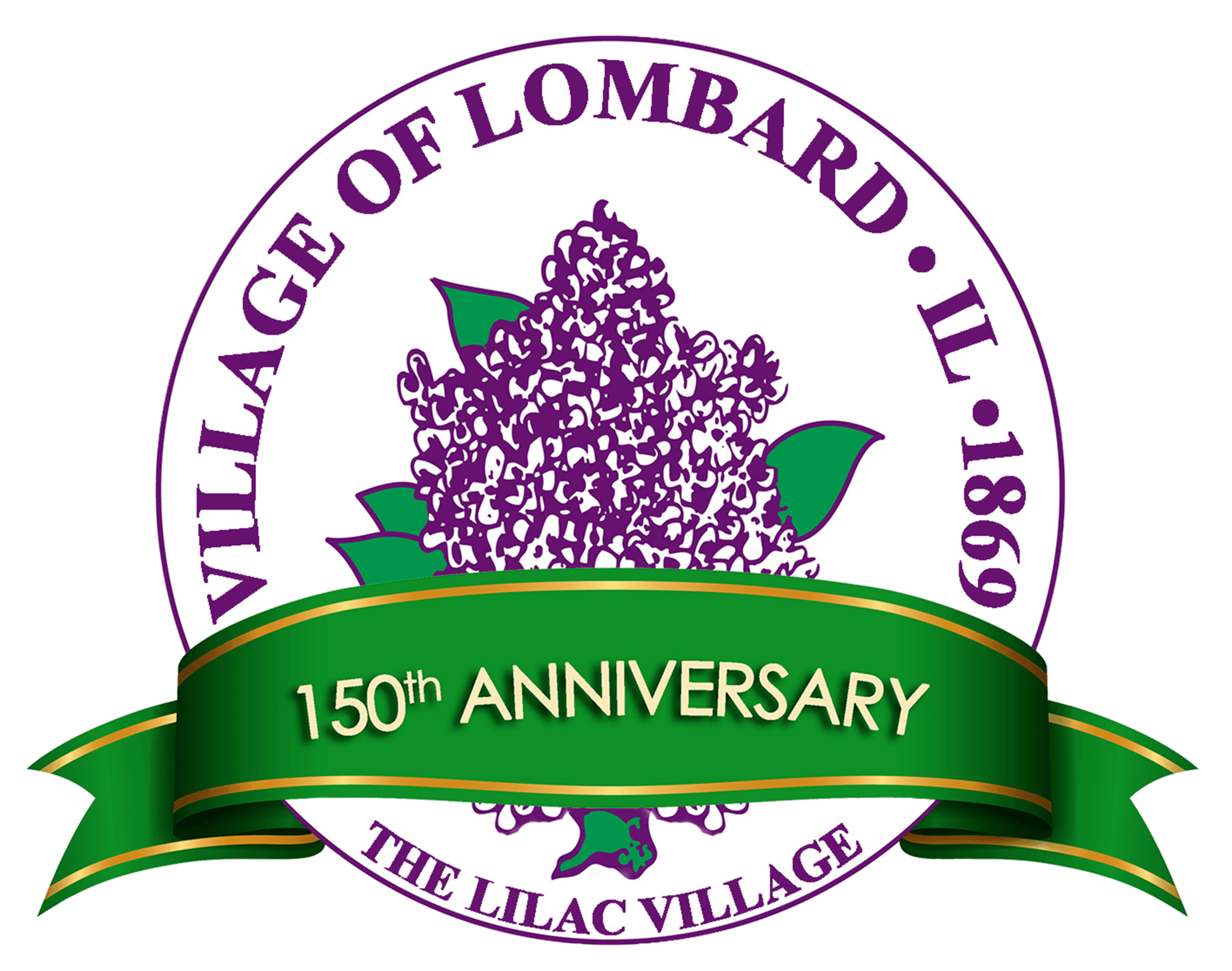Highlights of Lombard History
Early Settlement
Map, Babcock’s Grove (Lombard), c. 1850s.
After the Black Hawk War in 1832 forced the American Indians west of the Mississippi, this area of Northern Illinois was inundated with settlers from New England. Among the first to settle along St. Charles Road and the DuPage River, were Ralph and Morgan Babcock, and the area came to be known as Babcock’s Grove by 1834.
Churchill Homestead, c.1886.
In 1849, the Galena and Chicago Union Railroad established a station in Babcock’s Grove, enticing commuters to move here. Within a few short years, several pioneer families, including the Churchills, the Fish family, and the Pecks had established homesteads, early roads, and Sabbath schools. Many early settlers were from New England and settled Illinois with the idea of expanding “Yankee” ideals like temperance and anti-slavery. Babcock's Grove was incorporated as Lombard in 1869.
Portrait artist Sheldon Peck and his family moved to Babcock's Grove in 1837. According to family lore, he and Harriet lived with their five children in a covered wagon on their property while building their house. He was considered a radical abolitionist in the 1840s and 1850s and was known to have also aided freedom seekers on their journey north to Canada using the Underground Railroad. Visit Peck's Homestead—the oldest house in Lombard—at 355 E. Parkside. Read a Peck family chronology prepared by volunteer James Robinson.
Historic Figures of Lombard
Colonel William Plum's legacy is felt throughout Lombard, especially during Lilac Time. Colonel Plum, a telegrapher during the Civil War, became enamored with lilacs while touring Europe with his wife Helen in the 1910s. Over the following twenty years, the Plums traveled the world and increased their collection to over 200 varieties (now more accurately called cultivars).
Upon his death in 1927, Plum gave his property to the Village to be used as the first public park, and his home to be used as the first public library. This generous act of philanthropy permanently established the Lombard Park District, the Helen M. Plum Memorial Library, Lilacia Park and Lombard as “The Lilac Village.”
The Plum Home, today the Site of the Helen Plum Library. c. 1950s.
colonel Plum and Helen Plum, c. 1900s.
little orphan annie home (private Home)
Little Orphan Annie was created in 1924, by Lombardian, Harold Gray. Gray was an artist at the Chicago Tribune. He lived at 215 South Stewart Avenue in Lombard, and later purchased the LeRoy house at 119 North Main Street in Lombard for his parents. This large Italianate house is affectionately known as the "Little Orphan Annie home." Although it is not open to the public, the picturesque façade is worth a drive on North Main Street.
Ellen Martin
Lombard attorney Ellen Martin was the first woman to vote in Illinois—way back in 1891! Ms. Martin based her legal claim to vote on the words of the town charter. The charter deemed that residents of Lombard over the age of 21 would be allowed to vote in local elections. She stated her case on the fact that the town charter enfranchised ALL citizens, with no mention of gender.
Read more at www.suffrage2020illinois.org
Read more about Ellen Martin. (PDF)
Explore Lombard’s History - Lombard’s Sesquicentennial
The Village of Lombard was founded on March 29th, 1869. Special events and themes took place around town to celebrate the Village's 150th Anniversary in 2019.
In partnership with the Village of Lombard and the Lombard Historical Society, a GIS Village of Lombard Sesquicentennial Story Map was created.









